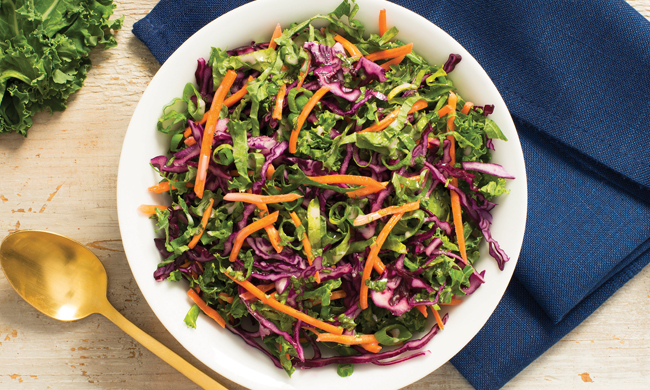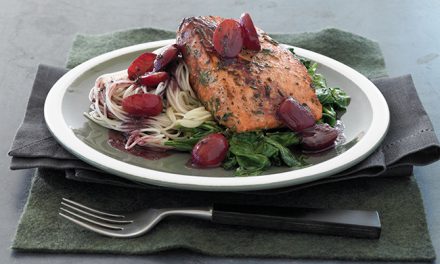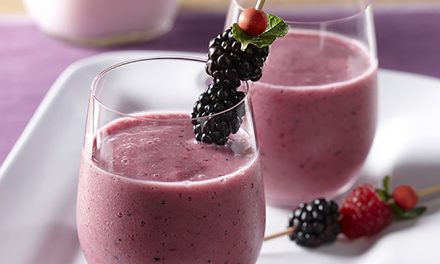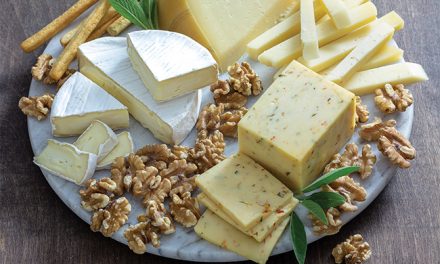Add fruits, veggies to meals for plant-forward nutrition
(Family Features) Adding more fruits and vegetables is one of the simplest ways to make at-home meals healthier for your family.
Focusing your plate on more of the good stuff – vegetables, fruits, whole grains, legumes, nuts, plant-based proteins, lean animal proteins and fish – can help you cut back on the not-so-good stuff, including refined carbohydrates, added sugars, processed meats, sodium and saturated and trans fats, according to the American Heart Association.
While some may think meat makes the meal and it can be part of an overall healthy eating pattern, a survey from Aramark, the largest U.S. based food service company, found many people want to ease up on meat consumption, and 2 out of 3 want to eat more fruits and vegetables. The company made sweeping changes to incorporate more plants into its menus, resulting in meals with fewer calories, less saturated fat and reduced sodium.
Punching up the plants on your plate can lead to better nutrition in your house, too. Try putting vegetables and fruits center-stage with these heart-healthy salads.
To help encourage healthier communities, the American Heart Association and Aramark have made it simple for you to learn better nutrition and lifestyle habits and to share that information. For more recipes, tips and resources, visit heart.org/healthyforlife.
Make the Most of Seasonal Fruits and Veggies
For many people, warmer weather means more time outdoors and food cooked on the grill. To help make your meals more nutritious, consider these ideas to choose, store and enjoy warm-weather fruits and veggies:
Corn
Straight from the cob, sweet corn is packed with fiber and antioxidants and can be grilled, boiled or even microwaved. Try tossing it with a small amount of light mayonnaise, lime juice, smoked paprika and cayenne pepper for a simple version of Mexican Street Corn.
Cucumbers
Prep is a breeze with cucumbers, which can be eaten raw with or without the peel. For a no-fuss salad, toss together cucumbers, onion and fresh dill then add a dash of sugar, salt and pepper plus a splash of cider vinegar.
Tomatoes
Full of nutrients, including vitamins A and C and the antioxidant lycopene, tomatoes are a popular option for seasonal dishes. Store them stem-up on the counter, rather than in the fridge, to prevent bruising and enhance the flavor.
For more ways to introduce fruits and veggies to fresh, seasonal meals, visit Aramark’s wellness blog at fyp365.com.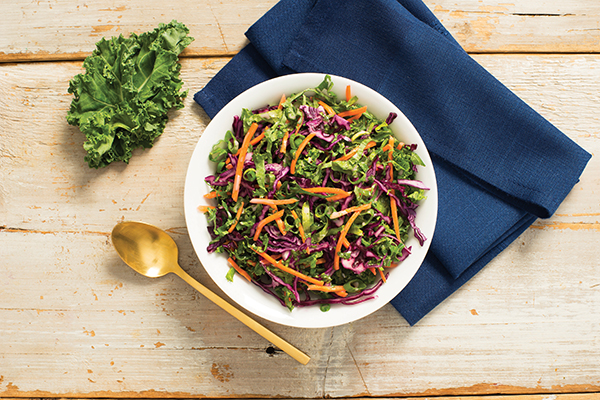
Tangy Kale Slaw with Cilantro and Honey
Recipe courtesy of Aramark
Servings: 6
- 2 tablespoons red wine vinegar
- 1 tablespoon light mayonnaise
- 1 tablespoon honey
- 1 1/2 teaspoons cilantro leaves, washed and chopped
- 1 teaspoon lime juice
- 1/4 teaspoon kosher salt
- 1/8 teaspoon ground black pepper
- 2 cups kale leaves, washed, shredded and stems removed
- 1/2 cup red cabbage leaves, washed and shredded
- 1/2 cup carrot, trimmed and shredded
- 1/4 cup green onion, trimmed and thinly sliced
- In bowl, combine vinegar, mayonnaise, honey, cilantro, lime juice, salt and pepper. Whisk until well blended.
- Add kale, red cabbage, carrot and onion. Toss to coat.
- Cover and keep chilled prior to serving.
Nutritional information per serving: 40 calories; 1 g protein; 1 g fiber.
Watch video to see how to make this delicious recipe!

Black-Eyed Pea, Corn and Rice Salad
Recipe courtesy of the American Heart Association
Servings: 6
- 2 cans (15 1/2 ounces each) no-salt-added or low-sodium black-eyed peas, rinsed and drained
- 1 can (15 1/4 ounces) low-sodium or no-salt-added whole-kernel corn
- 1 package (8 1/2 ounces) brown rice, microwaved according to package directions and broken into small pieces
- 2 medium ribs celery, chopped
- 1 medium bell pepper, seeded and chopped
- 1/4 cup chopped fresh parsley
- 1 tablespoon extra-virgin olive oil
- 1 tablespoon water
- 1/8 teaspoon black pepper
- In large bowl, stir peas, corn, rice, celery, pepper, parsley, olive oil, water and black pepper until combined.
Nutritional information per serving: 231 calories; 10 g protein; 7 g fiber.
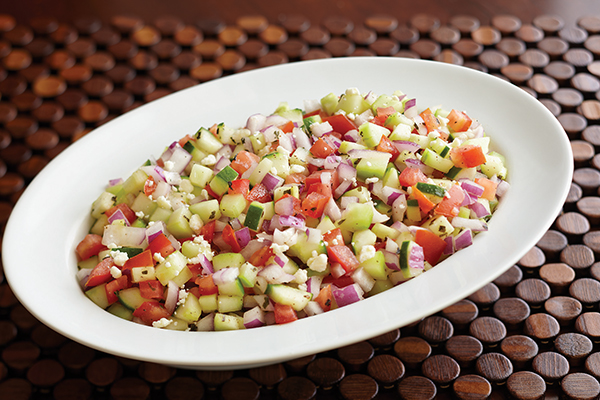
Simple Persian Salad
Recipe courtesy of the American Heart Association
Servings: 4
- 2 medium cucumbers, seeded and diced
- 4 medium tomatoes, diced
- 1 medium red onion, diced
- 1/4 cup chopped fresh mint or parsley
- 2 tablespoons fat-free feta cheese, crumbled
- 2 medium limes, juice only
- 1 tablespoon extra-virgin olive oil
- 1/2 teaspoon black pepper
- In bowl, stir cucumbers, tomatoes, onion, mint and feta. Cover and refrigerate 20 minutes.
- In small bowl, whisk lime juice, oil and pepper until well blended.
- Pour dressing over salad, tossing gently to coat.
Nutritional information per serving: 88 calories; 3 g protein; 3 g fiber.

